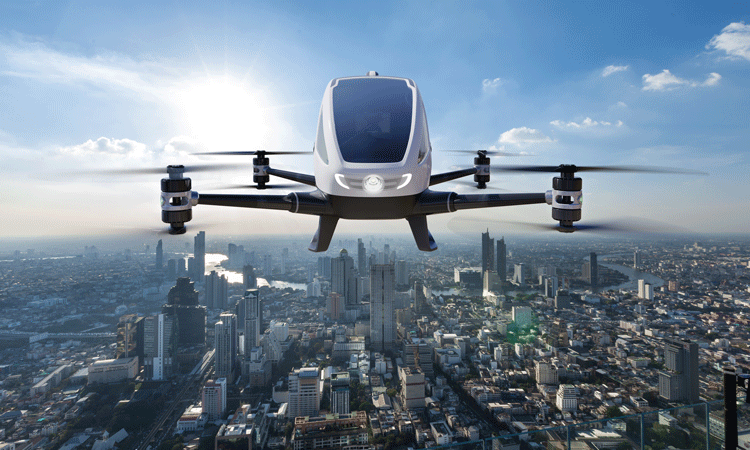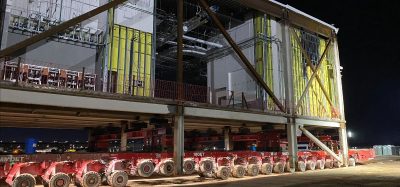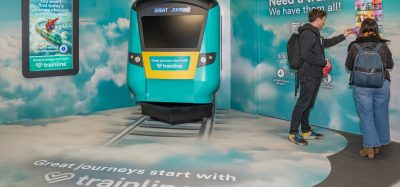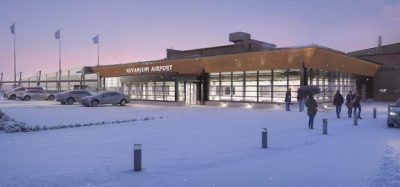Urban Air Mobility: A bird’s-eye view of legal and infrastructure challenges
- Like
- Digg
- Del
- Tumblr
- VKontakte
- Buffer
- Love This
- Odnoklassniki
- Meneame
- Blogger
- Amazon
- Yahoo Mail
- Gmail
- AOL
- Newsvine
- HackerNews
- Evernote
- MySpace
- Mail.ru
- Viadeo
- Line
- Comments
- Yummly
- SMS
- Viber
- Telegram
- Subscribe
- Skype
- Facebook Messenger
- Kakao
- LiveJournal
- Yammer
- Edgar
- Fintel
- Mix
- Instapaper
- Copy Link
Posted: 1 July 2024 | Fahad Masood | No comments yet
In this article, Fahad Masood, Faculty for Aviation Policy and Law at the Modern College of Business and Science (MCBS) takes a bird’s eye view of the legal and infrastructure challenges facing urban air mobility (UAM) and explores the collaborative efforts underway to pave the way for a seamless UAM future.


Imagine a world where gridlocked cityscapes are transformed by silent electric vehicles skimming the rooftops. This is the vision of urban air mobility (UAM), a revolutionary transportation system poised to revolutionise how we navigate our cities.
UAM promises on-demand, point-to-point travel via electric vertical take-off and landing (eVTOL) vehicles, offering a potential solution to the ever-growing crisis of traffic congestion and urban sprawl. However, before this vision takes flight, significant legal and infrastructure challenges must be addressed.
The legal landscape of UAM
The legal framework for UAM is a complex tapestry yet to be fully woven. Below are some key threads which must be addressed.
Airspace rights and zoning laws: Traditional aviation regulations govern operations in controlled airspace. UAM, however, introduces a new layer of complexity. Who owns the airspace at lower altitudes where eVTOLs will operate? Existing zoning laws may not have envisioned a future with flying vehicles. Collaborative efforts between aviation authorities, local governments and UAM developers are crucial to define airspace utilisation and establish clear zoning regulations for vertiports (landing pads for eVTOLs).
Regulatory frameworks for safety and compliance: Safety is paramount. Robust regulations are needed to ensure the safe operation of eVTOLs. This includes establishing certification standards for these vehicles, defining pilot qualifications, and developing comprehensive air traffic management (ATM) systems specifically designed for the unique needs of UAM. International collaboration is vital in this area, fostering the creation of harmonised regulations that enable the safe and efficient integration of UAM across the globe.
Insurance and liability in the age of UAM: Current aviation insurance models may not adequately cover the risks associated with UAM operations. New frameworks need to be developed to address potential liabilities arising from accidents involving eVTOLs. This will require collaboration between insurers, UAM manufacturers, and regulatory bodies to ensure adequate coverage for operators and passengers alike.
Infrastructure imperatives for UAM
A robust infrastructure network is essential for the successful implementation of Urban Air Mobility. Here are some key considerations.
Vertiport design and location: Vertiports, the urban hubs for eVTOLs, require careful planning. Factors like noise reduction, safety protocols and efficient passenger flow need to be incorporated into vertiport design. Strategically locating vertiports near existing transportation infrastructure like metro stations or public bus terminals will be crucial for seamless integration into the urban ecosystem. Additionally, noise pollution concerns must be addressed through innovative design solutions and the adoption of quiet eVTOL technologies.
Integrating UAM with existing transportation: UAM should not be seen as a standalone solution, but rather as an extension of existing transportation networks. Seamless integration with buses, trains and ride-sharing services will be vital. Imagine a future where you hail an ‘air taxi’ – eVTOL – from your smartphone app, just like you would a taxi, and it seamlessly connects you to your final destination via a network of integrated transportation options.
Technological backbone of UAM: Advanced air traffic management system – UATM (urban air traffic management) – is needed to ensure the safe and efficient operation of a multitude of eVTOLs navigating the urban airspace. This involves developing robust communication protocols, real-time traffic monitoring systems, and robust cyber-security measures to safeguard against potential threats. Additionally, advancements in automation and sense-and-avoid technologies will be crucial for enabling safe and autonomous eVTOL operations in the future.
The human and environmental factors
Public acceptance is vital for the success of UAM. Below are some social and environmental considerations.
Winning public trust: Building public trust in UAM technology requires a multi-faceted approach. Open communication and transparent safety procedures are key. Educational and awareness campaigns can showcase the environmental benefits of eVTOLs, such as reduced traffic congestion and emissions. Public engagement through open forums and workshops can address concerns and foster a sense of ownership in the development of UAM.
Environmental considerations: Sustainability is a core principle for UAM. Environmental impact assessments need to be conducted to ensure minimal disruption to existing ecosystems. Promoting the use of electric and hydrogen-powered eVTOLs will significantly reduce noise and air pollution compared to traditional helicopters. Urban planning for vertiports must also consider factors like noise mitigation and energy efficiency.
A collaborative take-off
The challenges facing Urban Air Mobility are significant, but not insurmountable. Collaborative efforts between governments, aviation authorities, UAM developers, and the public are crucial to navigate the legal and infrastructural complexities. As these challenges are addressed, UAM has the potential to revolutionise urban transportation, offering faster commutes, reduced congestion, and a more sustainable future for our cities. Also, by prioritising sustainability, and investing in research and development, we can overcome the legal and infrastructure challenges of UAM. This exciting new era of urban transportation holds the potential to transform our cities, making them more efficient, sustainable, and connected.
Recommendations
In the author’s learned opinion, building a robust UAM ecosystem requires a comprehensive approach. Following are some key recommendations.
International collaboration: Harmonised regulations and co-ordinated infrastructure development are crucial for a seamless global UAM network. International aviation organisations and regulatory bodies should work together to establish clear guidelines and best practices.
Public-private partnerships (PPIs): Collaborative efforts between governments and the private sector can accelerate UAM development. Public funding can support infrastructure projects and research initiatives, while private companies bring innovation and technological expertise to the table.
Community engagement: Open communication and active engagement with communities are essential for building trust and addressing public concerns. Local communities should be involved in the planning process for vertiports and kept informed about safety protocols and environmental impact assessments.
Focus on sustainability: Promoting the use of electric and hydrogen-powered eVTOLs is a priority. Additionally, sustainable urban planning practices for vertiports and noise mitigation strategies are crucial to ensure a minimal environmental footprint.
Invest in research and development: Ongoing research and development by academia-industry teams are essential for advancing eVTOL technology, evolving air traffic management systems, and developing robust safety protocols. Continued investment in these areas will pave the way for a more efficient and reliable UAM future.
Further readings
Following are a few resources for those who want to delve deeper into the world of Urban Air Mobility:
Federal Aviation Administration (FAA): https://www.faa.gov/uas (Provides information on the FAA’s efforts to integrate UAS (Uncrewed Aircraft Systems) into the National Airspace System)
Urban Air Mobility (UAM) News: https://www.urbanairmobilitynews.com/ (Offers news and insights on the UAM industry)
Electric Vertical Take-off and Landing (eVTOL) Community: https://verticalmag.com/evtol/ (Provides a platform for the eVTOL community to connect and share information)
Vertical Flight Society: https://vtol.org/ (A professional society dedicated to advancing vertical flight technology).


Related topics
Advanced air mobility (AAM), Digital transformation, Innovation, Regulation and Legislation, Safety


















